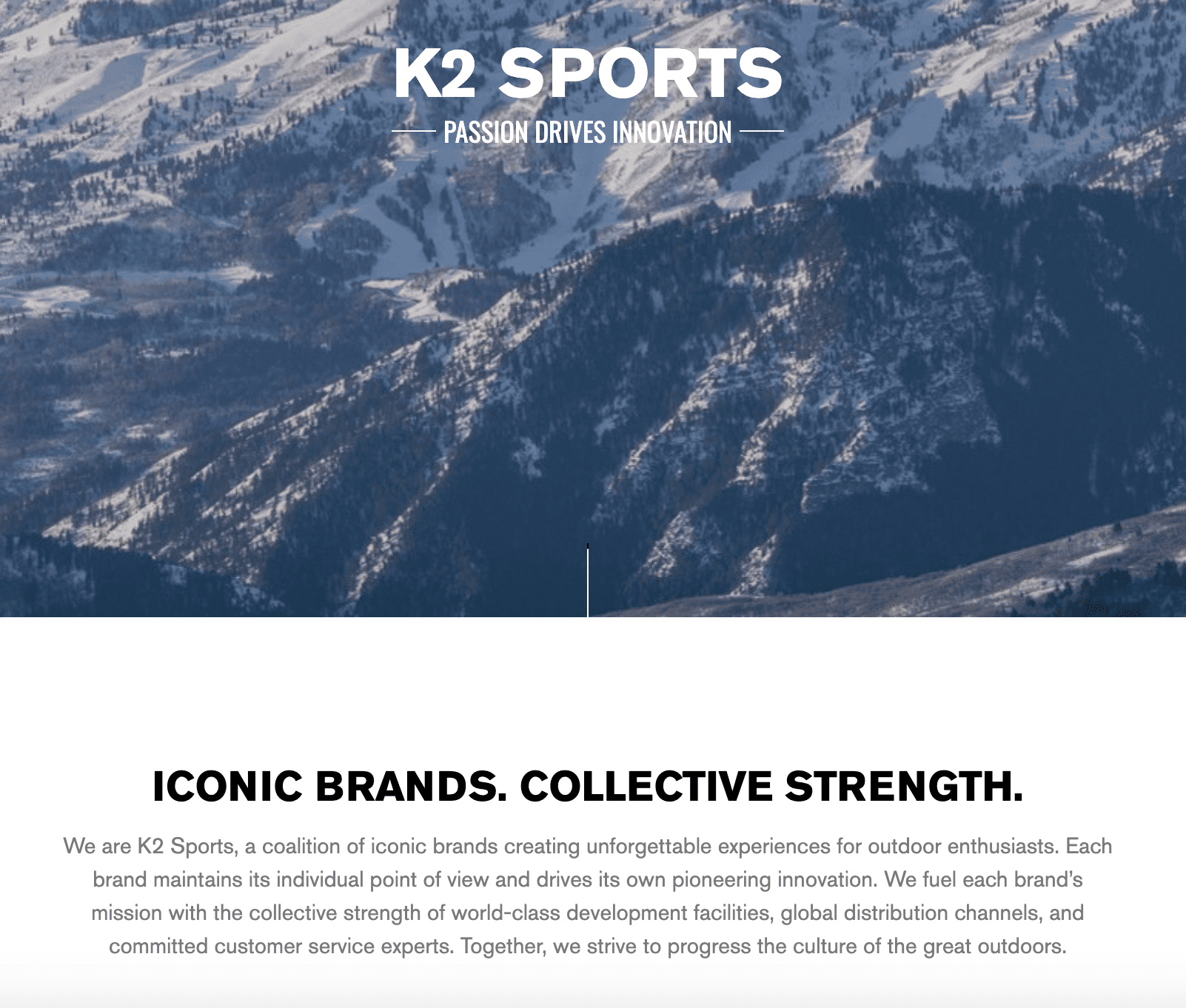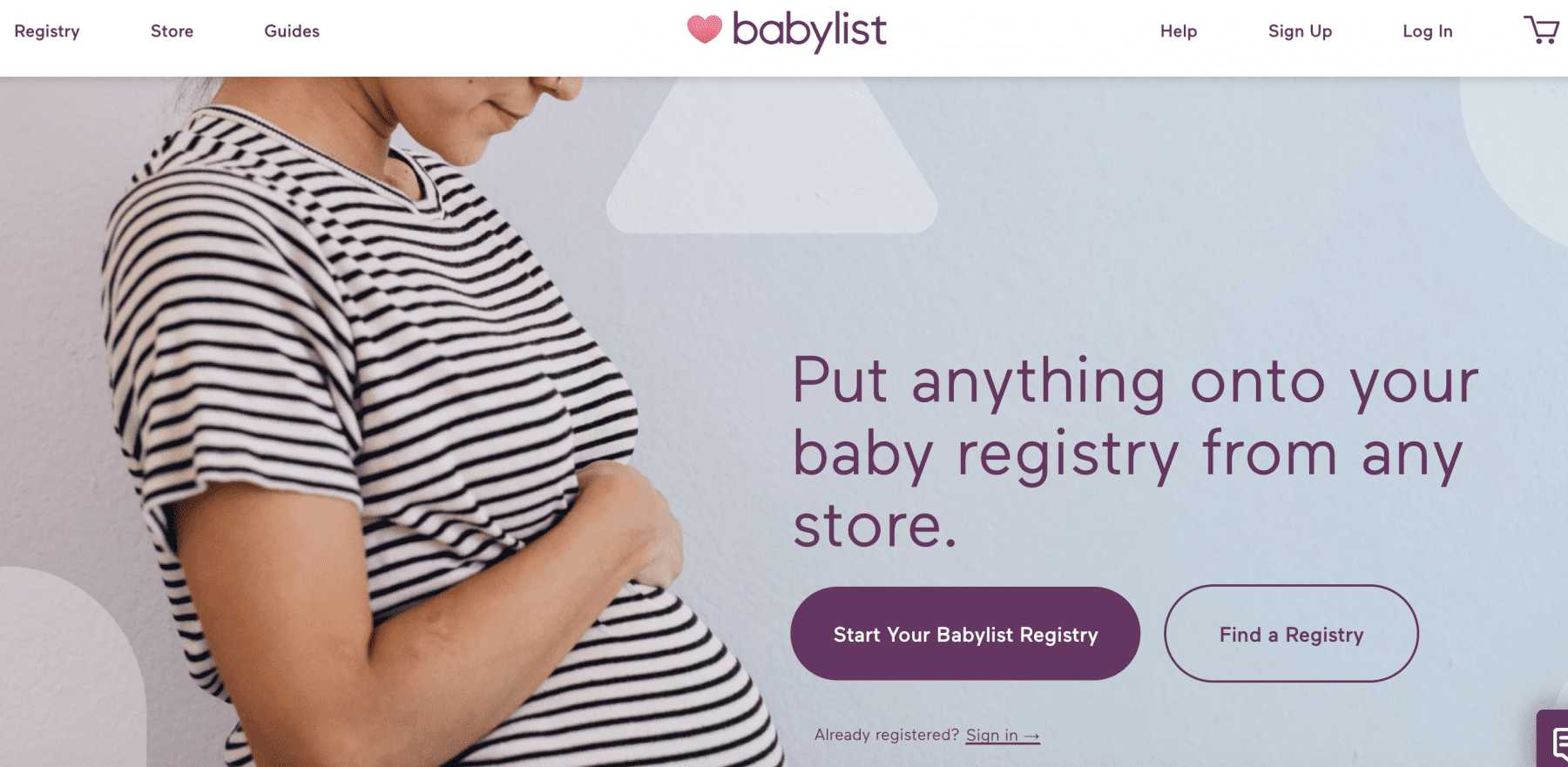Today, customers expect a seamless experience across channels and touchpoints, whether through mobile, IoT devices, or Progressive Web Apps (PWA). eCommerce businesses need to keep up with the expectations to deliver long-term value by providing customers with integrated and personalized shopping experiences.
Providing great micro-experiences across the entire customer journey, at scale, is daunting, especially when it means continually iterating on your business, tools, and technology. Even the slightest of lapses often spells a domino effect of breakdowns, leading to platform outages and poor customer experiences.
To tackle the mounting challenges, eCommerce businesses are looking for a more comprehensive and seamless way to reimagine their platforms and gear up to become flexible. Many are turning to headless commerce as the answer.
Table of Contents
- What is Headless Commerce?
- How Does Headless Commerce Work?
- Headless Commerce vs. Traditional eCommerce Platforms
- 5 Benefits of Headless Commerce
- How Does Headless Commerce Impact Your Customers?
- The Challenges of Headless Commerce
- How Do You Get Started With Headless Commerce?
- Why Headless Commerce and Subscriptions are a Great Fit
- FAQs on headless commerce
What is Headless Commerce?
Headless commerce refers to decoupling the front-end presentation layer (the customer-facing side), from the back-end infrastructure (the tools operating behind the curtain that keeps your system up and running and enables your eCommerce experience).
Decoupled headless architecture gives brands:
- More flexibility over the customer experience by helping businesses engage with online shoppers in more personalized ways (which helps increase conversion rates)
- The ability to add multiple website customizations without worrying about frontend platform downtime
- Opportunity to stay ahead of customer expectations by making fast changes and updates, all while staying brand-consistent across digital channels
How Does Headless Commerce Work?
Going headless requires switching from a commerce-led to a content-led approach through the use of APIs (application programming interface).
An API is a software interface that allows two applications to communicate with one another. Headless commerce architecture works by passing API requests from the presentation layer on the front end to the application layer on the backend platform.
For instance, when you purchase something on your smartphone, the presentation layer (e.g. app interface) sends an API request to the application layer (payment gateway and order management tools in the backend) to process the order.
Once the application layer works its magic, i.e. registers and processes your order, it communicates back to the presentation layer which displays the order status back to you.
This mechanism remains the same for the frontend of headless eCommerce sites, be it on a virtual storefront, mobile phone, smartwatch, or kiosk screen. This is because a headless commerce system’s backend will interact with anything that is willing to send the right API calls.
Moreover, the front end doesn’t have to deal with any of the processing and only needs to focus on displaying information to the user.
Hence, a headless storefront adds impressive flexibility and omnichannel capability to an eCommerce business.
Headless Commerce vs. Traditional eCommerce Platforms
The key difference between headless and monolithic platforms is that headless solutions are decoupled whereas the latter are not.
Owing to the decoupling, a headless solution’s backend functionality can power multiple frontends with the help of APIs. A monolithic commerce platform, on the other hand, comes packaged with only one frontend and prevents you from changing the frontend without impacting the backend layer.
Headless eCommerce platforms create a consistent content experience for customers. It allows their shopping journey to be carried out across multiple digital devices seamlessly.
As online shoppers are checking out products or making purchases, the frontend communicates this information to the backend via API, and the backend processes this information and displays it accordingly on the front end.
In the case of a traditional platform, the customer is restricted to shopping only in a classic web store.

Why traditional commerce platforms are limiting
While using a traditional single platform to manage both the front-end experience and the back-end systems may work temporarily for many organizations that don’t have large development teams, including startups, these traditional commerce platforms soon become very restrictive in more ways than one:
- Limit creative control
- Make it challenging to adopt new technologies
- Reduce the ability to have customer touchpoints across channels
- Impact overall organizational agility and competitiveness
- Not scalable
That’s why so many companies choose headless commerce. With a decoupled architecture and APIs communicating between the front-end and the back-end systems, you can:
- Easily customize the frontend
- Simplify the process of creating a personalized experience for shoppers
- Have more control over your business
- Reduce dependency on backend developers
- Spend less time on development (and as a result, spend less money)
- Easily build a brand-consistent experience based on a single view of data
For the front-end presentation layers, headless content management systems (CMS) like WordPress or a digital experience platform (DXPs) such as BloomReach, can be used by creative teams to optimize the user experience.
On the back-end, you’ll have:
- An inventory management system
- A payment gateway
- A billing and subscription platform
- An accounting system managing billing and payments
- Data processing
- The checkout process
- Customer account management
- Product inventory
5 Benefits of Headless Commerce
If you are looking to scale up your eCommerce business, taking advantage of the benefits of headless commerce will set you on a path toward growth.
1. Seamless Integrations
Since headless eCommerce solutions are powered by APIs, integrating them with new or existing systems becomes much easier than with other solutions.
For instance, integrating different specialized tools like subscription management software or marketing automation tools with a headless eCommerce website is simple.
Unlike in monolithic systems where you might have to use plugins that need frequent updates and security patches (since there are no APIs), headless systems don’t require many updates after the initial connection is made, ensuring that your data is transferred quickly and easily.
2. True Omnichannel Capability
Omnichannel marketing is extremely effective when it comes to online sales. Data suggest a 250% increase in purchase frequency and a 13% increase in average order value (AOV) in omnichannel versus a single channel.
With a sell-everywhere strategy, you have a better chance of connecting with those customers at various points along their purchasing journey, and this is exactly where a headless solution is handy.
3. Cost Savings
While the initial costs of implementing a headless solution may be high, there is a lot of long-term benefit to be gained from having a headless solution in terms of the agility it offers your business.
It enables you to frequently customize your site and instantly respond to consumer trends without spending extra resources in terms of costs or personnel.
Moreover, you can cut costs on everything from product licenses to hosting fees to website maintenance.
4. Competitive Advantage
With a headless commerce platform, the frontend (your website) can be rapidly updated without affecting the system’s backend. With traditional platforms, eCommerce release updates might cause workflow delays and outages.
On the other hand, engineers at Amazon were deploying code (updating their site) every 11.7 seconds, on average, within a year of moving to AWS. The agile method also cut down on the frequency and duration of outages, which raised revenue.
While some updates are required for functionality and security, a headless platform enables better customer service since, for example, you don’t need to make a back-end modification every time you want to add a rewards program or a product rating feature to your website.
5. Rapid experimentation
In eCommerce, experimentation in creating different user experiences and pricing can be a game-changer.
Superfoods Company, which sells natural plant-based products, takes about 30 minutes to decide on a pricing level or launch a new product with Chargebee.
The ability to experiment helped Superfoods increase its revenue by 4X in less than a year. They expanded their product line from one to five products and their subscriber base to over 200,000.
With headless commerce, your company can do endless experiments such as:
- Rolling out new offerings or features
- Testing various promotions and discounts
- Playing around with different page layouts
- Creating more engaging user experiences
All of this, without the fear of breaking things and asking your development team to continually update your back-end systems when any changes are made in the front-end.
How Does Headless Commerce Impact Your Customers?
We’ve seen how headless commerce benefits merchants. Here’s a rundown of the benefits of headless commerce for customers:
1. Personalization
Since the front-end presentation layer is decoupled in the headless commerce approach, eCommerce merchants can test personalization strategies without disrupting their back-end systems—a huge win for all creative and development teams, and similarly, for customers.
Personalization goes a long way in building long-term customer relationships and increasing brand loyalty.
Marketing teams can leverage all the customer data generated across all touchpoints to create relevant promotions and offers that would resonate better with customers and make it a great shopping experience for them.
2. Faster time to market
Consumers can be very demanding, and to stay ahead of the competition, brands need to deliver what consumers want when and where they want it.
Headless commerce helps you keep up with the latest trends and technologies and implement new offerings at much lower costs and time to market than traditional systems can. Development teams spend less time on user interface changes.
3. Unified customer experience across channels
Headless commerce lets brands introduce new customer points powered by the same set of APIs to ensure consistency of data and functionalities.
Today, consumers use several different channels to search for and buy products, and these touchpoints are an extension of your brand.
Headless commerce platforms ensure a unified presence across the channels without re-architecting your entire platform so customers can facilitate transactions without having to visit the web store every time.
For instance, brands can convert their Instagram account into a mobile storefront by adding the “Shop Now’ functionality to their posts.
The Challenges of Headless Commerce
While headless commerce systems have undeniable benefits, the transition is not that easy and it’s not for everyone. If you are considering the move to a headless platform, here are some concerns you should be aware of.
1. Higher ownership costs
Most headless platforms don’t come with a front-end, meaning you’ll have to consider the cost of investing in one. Also, given that it is a pay-per-use architecture, the total cost of ownership goes up with the number of integrations.
2. Flexibility comes with complexity
Smaller teams may find it challenging to manage a distributed system rather than a single solution. You will have to deal with multiple vendors and have various teams focus on the different blocks, making it easier for larger teams to handle.
3. Replatforming is not that easy
While there are definite long-term benefits that come with transitioning to a headless platform, eCommerce replatforming can be challenging and time-consuming.
It all depends on the number of front-end experiences and back-integrations you are going after. Careful consideration must be given to your timelines at a team and company level.
How Do You Get Started With Headless Commerce?
Now that you have a clear understanding of headless commerce and how it can benefit your business, you might be inclined to go headless yourself.
If that’s the case, there’s a three-pronged approach that will help you get started with headless commerce:
- Go through various criteria to assess whether headless commerce is right for your business
- Evaluate what’s important to you (features/benefits/use cases) before switching to a headless platform
- If you’ve decided to go ahead, research and choose one of the best headless eCommerce solutions on the market today
Step 1: Assess Whether Headless Commerce Is Right For Your Business
The first step to getting started with a headless commerce solution is to figure out if it is right for your company. The following criteria need to check out first:
- You are willing to forego a pre-built, templated storefront with out-of-the-box functionality in exchange for the ability to provide your customers with a unique, customized experience.
- You have a dedicated technical team in-house or are willing to collaborate with an outside agency to develop and launch your new solution.
- You want to reduce website downtime and improve website performance.
- You need more advanced features that plugins can’t provide without a lot of customization.
- You want to make front-end design changes quickly and frequently.
- You want to drive conversion across more customer touch points (e.g., web, mobile, in-store, self-checkout, curbside pickup, AR/VR, etc.) by adopting an omnichannel sales strategy.
- You want to be able to handle the special requirements and complexity that come with running multiple business models, keeping track of customer-specific pricing, configurations, and the like.
Once the answer is yes to the above criteria, it’s time to seriously consider the move to a headless solution.
Step 2: Evaluate What’s Important to You In an eCommerce Platform
Transitioning to headless commerce is a big decision. You need to choose a platform that suits your business needs and can keep up with your growth.
Here are some of the features and use cases you should consider before making the move to a headless system:
1. Scalability and customization of the platform
As you scale, the platform you select needs to scale with your business and provide additional support. And while every business has its own unique needs, we suggest you seek out a platform that comes with reliable and fast APIs that help automate and customize your store.
Ensure the platform has plenty of one-click apps or built-in integrations that connect and update in real-time to help you scale seamlessly without hiring additional front-end developers.
2. Ability to provide an omnichannel experience
To be successful in the eCommerce business, you need to have an omnichannel strategy. Customers are looking and shopping for products everywhere, whether it’s marketplaces like Amazon or Etsy or social media platforms like Instagram and TikTok.
If you are not present where your customers are, that’s a lost growth opportunity for you. You need to establish your presence across various channels.
The headless commerce platform you choose should offer centralized channel management, so can you manage products and prices across channels from one place.
3. Ease of use and security
The whole point of moving to headless commerce platforms is to make sure that you don’t spend a lot of time in development and instead focus more on customer experience. The platform you choose needs to be easy to set up, navigate, and use as you scale the business.
One of the critical benefits of headless commerce platforms is the enhanced security it offers. The decoupled architecture reduces the risks of critical failures and makes it more resilient to cyber threats.
Make sure the back-end systems are compliant with PCI, GDPR, and other regulations as required, like SCA under PSD2 to ensure a secure payment flow.
4. Dependability and continuous customer support
You don’t want your store to crash when you experience high traffic, so you need to make sure that your headless platform offers a reliable hosting solution.
It’s crucial that the platforms offer continuous customer support 24/7 with easy-to-understand user guides and resources that can help you set up everything you need to go to market quickly.
Step 3: Purchasing One of the Most Popular Headless Commerce Platforms
There is no shortage of headless commerce platforms in the market today. Whether you’re looking for B2C or B2B eCommerce, there’s a headless solution that can meet your business needs.
Here are some of the best headless commerce platforms in 2022:
- Shopify Plus
- Magento Commerce (now Adobe Commerce)
- BigCommerce
- Commercetools
- Salesforce Commerce Cloud
- OroCommerce
- Commerce Layer
The solutions mentioned above provide exceptional eCommerce functionality and optimization opportunities that can assist you in creating great eCommerce digital experiences.
By using these services, you’ll be able to create custom front-end and back-end solutions for your customers, keeping your store relevant to their needs.
Note: This is not an exhaustive list by any means, and extensive research is required to figure out which platform best suits your business requirements. Once you’ve filtered down to one or two platforms, you can go ahead and schedule demos before making the final purchase decision.
The Final Step: eCommerce Replatforming
If you are switching from a monolithic platform to a headless platform, understand that replatforming requires some initial time and financial investments, but is known to lower overall replatforming costs.
You must first have a thorough understanding of your current platform, including the programming language it uses, the level of integration it supports, and the possibility of customization as and when needed.
Read more about eCommerce replatforming here.
Headless Commerce Examples
Going API-first has taken the eCommerce industry by storm. From big brands to niche players, many businesses have been readily adopting the headless approach.
Here are some examples:
Example 1: K2 Sports

K2 Sports is a collection of world-renowned brands that are leaders in the innovation, marketing, and quality of sports products such as alpine skis, snowboards, snowshoes, in-line skates, and Nordic ski equipment.
Based on a case study by Contentstack, K2 felt limited by their previous platform, Salesforce Commerce Cloud, and wanted to cut costs.
They were responsible for the maintenance costs because SCC was not a SaaS product, which prevented them from achieving their internationalization goals.
They decided to go for BigCommerce for their backend and Contentstack for their front-end CMS. After redesigning, the company was able to launch 8 brands and 16 sites in less than 9 months with their new headless setup, allowing them to focus on content creation.
Today, K2 can create sites 75% faster, publish content 90% faster, and has increased productivity by 50%.
Example 2: BabyList

BabyList is an online universal baby registry that allows parents to request unusual items such as diaper service subscriptions, as well as gifts from around the web.
The company uses Shopify Plus as its headless commerce platform to deliver seamless shopping experiences to its customers. As soon as a customer performs an action, like adding something to a cart, checking out, or reviewing their purchase status, the API intervenes and displays the required information to the customer.
Why Headless Commerce and Subscriptions are a Great Fit
Subscription-based businesses have experienced significant growth over the past decade and are likely to continue that growth.
The global subscription eCommerce market is expected to touch US$ 478.2 billion by 2025 from US$ 13.2 billion in 2018, clocking an impressive CAGR of 68.0% between 2019-2025.
Consumers love subscriptions because it removes the decision-making process and makes the buying process convenient and automatic.
For businesses, subscriptions are great because they:
- Bring in predictable (usually monthly) recurring revenue (MRR)
- Build long-term relationships with customers,
- Increase customer lifetime value (LTV).
- Provide customer data that can be leveraged to anticipate future needs
Unfortunately, traditional, monolithic eCommerce platforms usually don’t have the functionalities to support subscriptions and are integrated through third-party plug-ins.
These plug-ins offer limited integration across functions and, therefore, can’t scale seamlessly when your subscription sales increase and your organization starts to grow.
Because of this, monolithic architectures fail to give subscription eCommerce businesses what they need: fewer limitations and more flexibility.
With headless eCommerce, you can integrate subscription sales directly into the platform architecture. Subscription sales need payment gateways and the billing and management system to work well with the eCommerce platform to ensure seamless integrations across all business functions.
For instance, BigCommerce’s integration with Chargebee will let you offer subscriptions and give you access to a full suite of features, including dunning, payment gateway options, abandoned cart reports, gift subscriptions, and many more.
Headless commerce platforms also enable you to manage your subscription offering alongside traditional eCommerce stores, bringing an additional revenue stream.
All it takes is a simple API integration and Chargebee can provide you with everything you need in a headless eCommerce solution.
Ready to Move Forward with Headless Commerce?
Getting the flexibility you need from a decoupled solution as opposed to a monolithic architecture can help your organization take your subscriptions to the next level. You can leverage this headless structure with Chargebee to scale your eCommerce subscription offerings.
Chargebee partners with all the leading headless commerce platforms, and you can leverage these partnerships to scale your eCommerce subscription offering. Thanks to the flexibility it offers and the ability to run multiple storefronts, headless commerce platforms will help businesses scale across channels.
There is no doubt that headless commerce is the future of eCommerce. Are you ready to deliver a world-class customer experience with headless eCommerce?
Headless Commerce FAQs
Why is it called ‘headless’ commerce?
This approach to commerce is called headless since it decouples and removes the front-end presentation layer – or the head, leaving only the backend application layer. A headless system can store, manage, process, and deliver content without a front end.
What is headless commerce architecture?
Headless architecture is the decoupling of the front-end and back-end parts of the commerce solution. These separated layers are connected by APIs.
Is headless CMS the same as headless commerce?
Any eCommerce platform has multiple layers that together work to enable product discovery, transaction, and relationship building with your customers. This includes – content, checkout interfaces, fulfillment and order management, subscription management, and more.
CMS or content management systems, by principle, are the technology that houses your content. A headless CMS is a type of architecture wherein the content is stored in the backend, disconnected from the frontend where it is usually visible. This means making changes to your housed content will not immediately disrupt customer experiences on the frontend allowing for more legroom to experiment and iterate.
Headless commerce, on the other hand, is the overarching ideology that powers distinct headless tools like – headless CMS, or headless subscription management. Think of headless commerce as the governing principle and headless CMS as a gear in the machinery.
Does every eCommerce store need a headless solution?
No, not every eCommerce store needs a headless solution. The move to a headless solution depends on their business requirements. For instance, if you want to deliver a consistent content experience across multiple touchpoints, a headless approach is something you should strongly consider.
Do I need a developer for headless commerce?
In terms of upkeep and maintenance of your eCommerce platform, it is advisable to have developers who are equipped to handle any special requirements or complexities that may arise from managing the front-end and back-end commerce layers.
Is headless commerce the future of eCommerce?
Considering the rise in eCommerce adoption since the pandemic, as well as the hyper-connected digital world we now live in, how eCommerce brands connect and serve their customers will determine their success in the highly competitive eCommerce market. Given the many benefits of a headless approach, it is growing in popularity, and trends indicate that adoption is not slowing down anytime soon.
Based on WP Engine’s research on the state of headless technologies, more than half of enterprise organizations were already using headless in 2019. Less than two years later, that number had jumped to 64%. Even amongst respondents whose organizations weren’t using headless solutions, 92% said they were planning on evaluating headless solutions within the next 12 months (by 2022), which is an 80% increase from 2019.
Is Amazon headless commerce?
Yes, Amazon leverages headless commerce. In fact, they have pioneered headless commerce and microservices-based architecture and have been demonstrating the true value of incorporating a headless commerce platform for over two decades. However, their headless and modular commerce technology is unavailable to the general public, but the technology is being used by some headless commerce platforms with the help of APIs.
Is Shopify headless commerce?
No, Shopify isn’t a headless platform but Shopify Plus seems to offer more flexibility (if not complete flexibility like in a headless solution). Merchants can build the front-end presentation layer with third-party apps and pull data from Shopify using the GraphQL Storefront API.
Is WooCommerce headless?
WooCommerce is pushing towards headless functionality use of WordPress’s Rest API to allow for a seamless separation of the frontend and backend databases. eCommerce developers can quickly create custom headless commerce solutions tailored to your company’s specific requirements.
Is BigCommerce headless?
Yes, BigCommerce is pushing towards headless functionality by making APIs available for the majority of its catalog features.
Is Salesforce headless?
Yes, Salesforce is pushing towards headless functionality by offering scalable Commerce APIs.



